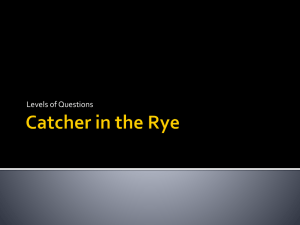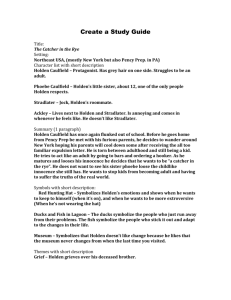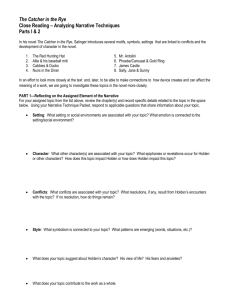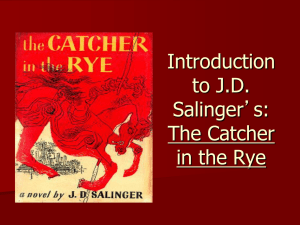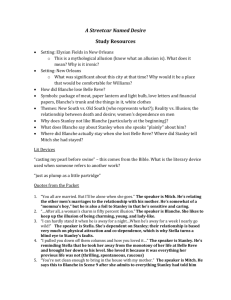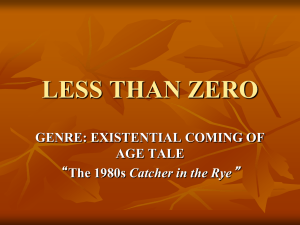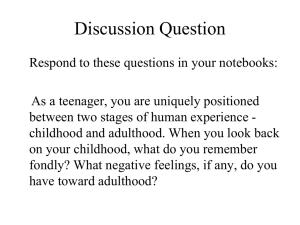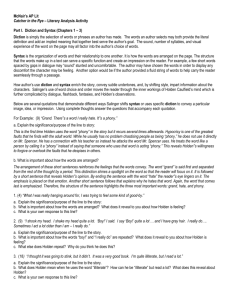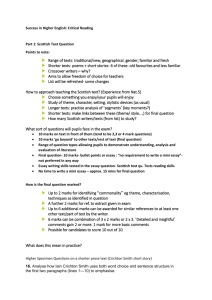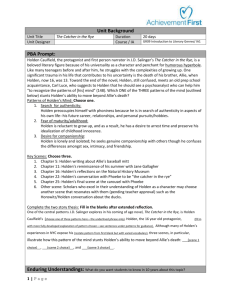Introductions and Conclusions
advertisement
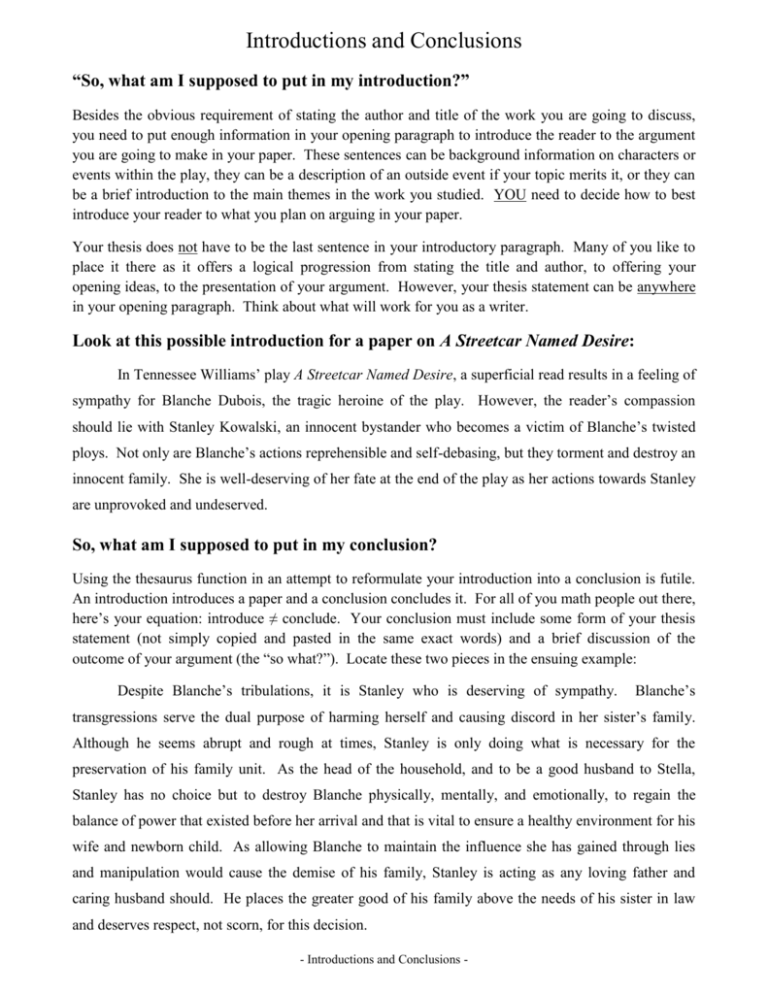
Introductions and Conclusions “So, what am I supposed to put in my introduction?” Besides the obvious requirement of stating the author and title of the work you are going to discuss, you need to put enough information in your opening paragraph to introduce the reader to the argument you are going to make in your paper. These sentences can be background information on characters or events within the play, they can be a description of an outside event if your topic merits it, or they can be a brief introduction to the main themes in the work you studied. YOU need to decide how to best introduce your reader to what you plan on arguing in your paper. Your thesis does not have to be the last sentence in your introductory paragraph. Many of you like to place it there as it offers a logical progression from stating the title and author, to offering your opening ideas, to the presentation of your argument. However, your thesis statement can be anywhere in your opening paragraph. Think about what will work for you as a writer. Look at this possible introduction for a paper on A Streetcar Named Desire: In Tennessee Williams’ play A Streetcar Named Desire, a superficial read results in a feeling of sympathy for Blanche Dubois, the tragic heroine of the play. However, the reader’s compassion should lie with Stanley Kowalski, an innocent bystander who becomes a victim of Blanche’s twisted ploys. Not only are Blanche’s actions reprehensible and self-debasing, but they torment and destroy an innocent family. She is well-deserving of her fate at the end of the play as her actions towards Stanley are unprovoked and undeserved. So, what am I supposed to put in my conclusion? Using the thesaurus function in an attempt to reformulate your introduction into a conclusion is futile. An introduction introduces a paper and a conclusion concludes it. For all of you math people out there, here’s your equation: introduce ≠ conclude. Your conclusion must include some form of your thesis statement (not simply copied and pasted in the same exact words) and a brief discussion of the outcome of your argument (the “so what?”). Locate these two pieces in the ensuing example: Despite Blanche’s tribulations, it is Stanley who is deserving of sympathy. Blanche’s transgressions serve the dual purpose of harming herself and causing discord in her sister’s family. Although he seems abrupt and rough at times, Stanley is only doing what is necessary for the preservation of his family unit. As the head of the household, and to be a good husband to Stella, Stanley has no choice but to destroy Blanche physically, mentally, and emotionally, to regain the balance of power that existed before her arrival and that is vital to ensure a healthy environment for his wife and newborn child. As allowing Blanche to maintain the influence she has gained through lies and manipulation would cause the demise of his family, Stanley is acting as any loving father and caring husband should. He places the greater good of his family above the needs of his sister in law and deserves respect, not scorn, for this decision. - Introductions and Conclusions - Look at this introduction from an essay on The Catcher in the Rye titled “Holden Caulfield: A Leading Example”: INTRO: People are typically made into icons because of their good deeds, which set an example for society. For example, firefighters are icons of bravery because of their determination to save others at the risk of their own lives. Valedictorians are icons of hard work because they set an example of how hard work for an education can pay off and help in the future. However, not all icons are people who are hardworking, brave, and courteous. The character Holden Caulfield in J.D. Salinger’s The Catcher in the Rye is not the most likeable person. He smokes as a teenager, does not like many people, and does not care the least bit about his education. However, Holden Caulfield is an icon of a righteous person because of his ability to transcend the conformities of society that make people immoral, therefore revealing flaws in society that can possibly be fixed. Here are topic sentences from the The Catcher in the Rye essay so you can see where this writer was headed: TS #1: Holden can be considered an icon of accepting people for their personalities and an icon of responsibility based on his love and respect for children, regardless of their age. TS #2: Holden’s desire to protect the innocence of children makes him an icon of responsibility to teenagers. TS #3: Holden is again proven to be an icon of accepting people for their personality over their physical appearance and an icon of good morals in how he is against superficiality. TS #4: Although Holden becomes very depressed in the novel, he is immune to the problems generated by selfishness that many people deal with in society and is fazed more by the problems of others, which deems him an icon of selflessness. TS #5: In J.K. Rowling’s Harry Potter series, the main character Harry is able to survive the evil Lord Voldermort’s attempts to kill him because his love and devotion to the well – being of others gives him the courage to fight back, as opposed to the others who simply hide in fear of their own lives. Holden and Harry’s selflessness opposed to the other character’s that care only for their safety (such as Voldemort’s followers) and personal appeal (such as Stradlater) are an example of how society lacks generosity. TS #6 (for conclusion): In all, Holden Caulfield is an icon of a human being that has the good morals that society lacks. He unmasks the flaws in society and provides an example in opposition to those flaws so the people of society can improve who they are. - Introductions and Conclusions - Look at this introduction and conclusion from the essay on Montana 1948 titled “Blood is Thicker than Water and the Law”: INTRO: Every family does not fit the classic model of a constantly supportive, tight family unit. Television programs today such as Brothers and Sisters and Everybody Loves Raymond embrace the dysfunction and conflict of real families, challenging this perfect image. It is these conflicts that make a family grow and be realistic in the eyes of readers and viewers. These families have hardships and setbacks but stick together through thick and thin. The Hayden family in Larry Watson's Montana 1948 has its problems and faces a large conflict but does not stick together due to Wesley's poor decision. A family tie is worth sacrificing morals and justice. CONCLUSION: Wesley's conflict comes down to his commitment to the law versus his commitment to his family. Wesley's obligation to the law pales in comparison to the obligation he has to his brother, wife, son and mother. A person will never get support from or have the same connection with another group of people as he or she does with relatives. The Hayden family may have flaws and arguments, but it is still a family worth fighting for. - Introductions and Conclusions -
